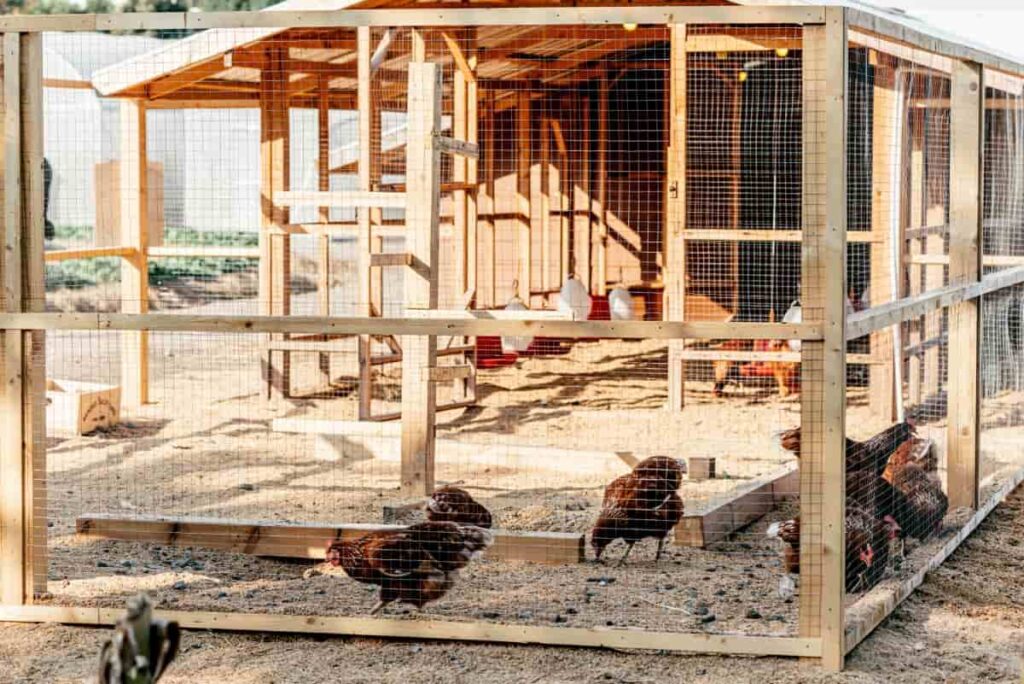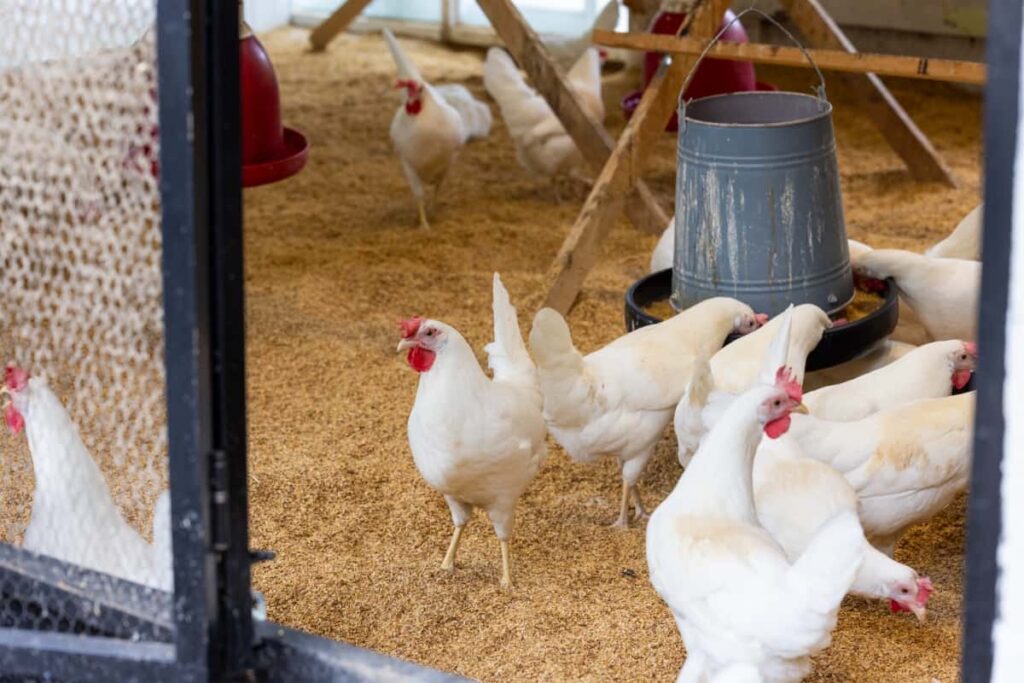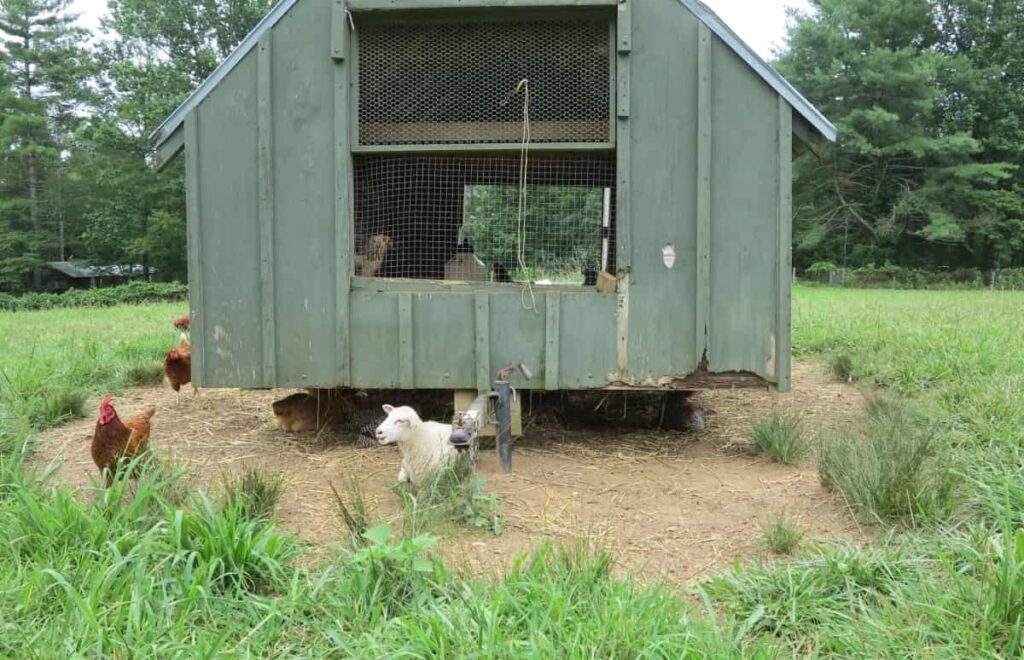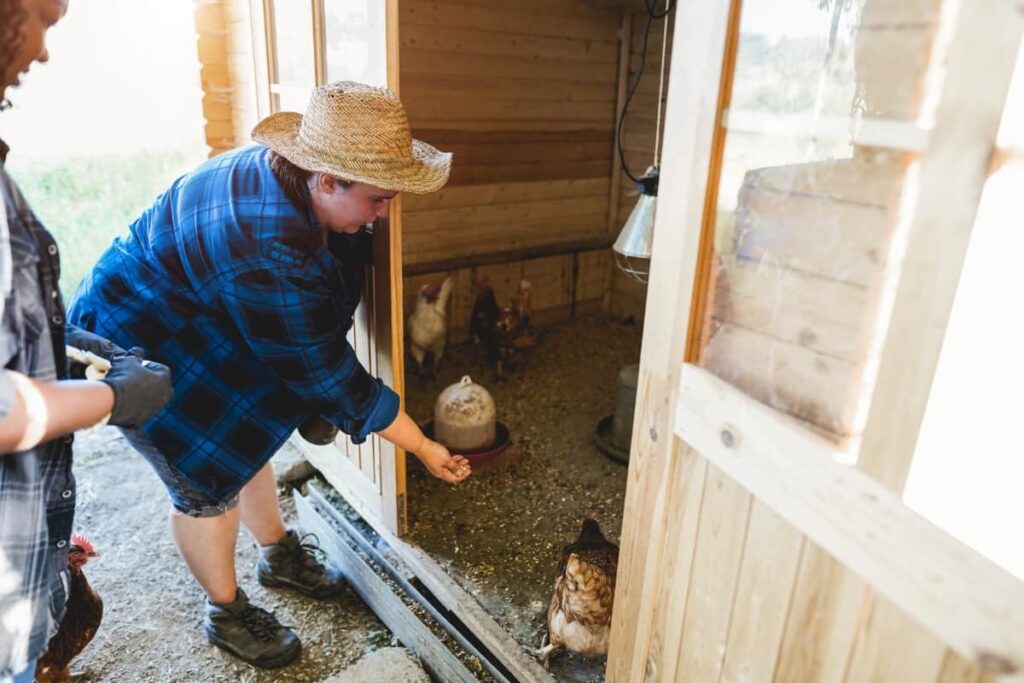Converting the stall allows for customization based on your needs and preferences. With proper planning and execution, converting a horse stall into a chicken coop can be a rewarding project that results in happy and healthy chickens.

9 Steps to Convert a Horse Stall into a Chicken Coop
Assessment and Planning
Evaluating the Space
Evaluate the size of the stall to determine how many chickens it can comfortably accommodate. Consider factors like ventilation, lighting, and access to ensure a suitable environment for your feathered friends. Evaluate the size of the stall to determine how many chickens it can comfortably accommodate. Consider factors like ventilation, lighting, and access to ensure a suitable environment for your feathered friends.
Designing Your Layout
Determine where nesting boxes and roosting areas will be located within the stall. Plan for easy cleaning and maintenance by creating efficient pathways for feeding and collecting eggs. Think about the overall functionality of the space as you envision how everything will come together. Make sure there is enough room for chickens to move around freely without feeling overcrowded.
Cleaning and Preparation
Deep Cleaning
Deep cleaning involves removing any traces of manure, dust, and debris from the stall to create a clean environment for your chickens. Start by sweeping out all corners and crevices, then scrubbing down the walls with a mild detergent solution. Don’t forget to disinfect surfaces thoroughly to eliminate any potential pathogens that could harm your birds.
Preparing the Stall
Preparing the stall includes repairing any damages, such as broken boards or uneven flooring. Make sure there are no sharp edges that could pose risks to your chickens. Consider adding fresh bedding materials like straw or wood shavings for comfort and cleanliness. A well-prepared stall sets the foundation for a functional and cozy chicken coop where your flock can thrive in their new home.
In case you missed it: Ultimate Guide to Raising Naked Neck Chickens: Feeding, Egg-Production, Breeding, and Care

Flooring Solutions
Choosing the Right Flooring
The right flooring can make maintenance easier and give a comfortable environment for your feathered friends. Choosing the right flooring material is key. Choose materials that are easy to sanitize, such as concrete or linoleum. Avoid materials like dirt or gravel that can harbor bacteria and pests.
Bedding Materials
Bedding materials are also important for your chicken’s comfort and health. Consider using straw, wood shavings, or sand as bedding options. These materials absorb moisture well and provide insulation during colder months. Regularly cleaning the bedding will help maintain a healthy living environment for your chickens.
Ventilation and Lighting
Installing Adequate Ventilation
Ensuring proper ventilation and lighting is crucial for the health of your feathered friends. Adequate ventilation helps to maintain good air quality inside the coop, reducing moisture levels and preventing respiratory issues among the chickens. Installing vents or windows can promote airflow, keeping the coop fresh and comfortable throughout the day.
Lighting Solutions
Proper lighting is important for a healthy and comfortable living environment for chickens. Natural light is essential for chickens’ growth and egg production. Positioning windows strategically can maximize sunlight exposure in the coop. Consider adding artificial lighting for consistent illumination, especially during shorter daylight hours in winter. Balancing natural and artificial light sources can make an optimal environment that supports your chickens’ natural behaviors and overall health.
Installing Nesting Boxes
Design and Placement
You want to create a cozy and private space for your hens to lay their eggs comfortably. Consider using wooden crates or repurposed materials for a rustic touch. Placement is crucial – ensure the nesting boxes are elevated off the ground to prevent pests from accessing them easily. Placing them in a quiet corner of the coop will provide a sense of security for your chickens while they lay their eggs. Nesting boxes must be placed in a quiet and secluded area of the coop to provide privacy for laying hens.
Number and Size
The number of nesting boxes you need depends on the size of your flock. As a general rule, one box per 4-5 hens should be sufficient. However, observe your chickens’ laying habits to determine if more boxes are necessary. Please make sure the nesting boxes are spacious enough for your hens to move around comfortably but snug enough to make them feel safe and secure while laying their eggs. Happy hens mean happy eggs.
In case you missed it: Expert Tips for Efficient Backyard Chicken Manure Management

Setting Up Roosting Areas
Importance of Roosting Bars
When setting up roosting areas in your converted horse stall chicken coop, remember that roosting bars are essential for your chickens’ comfort. These elevated perches allow them to rest and sleep off the ground, mimicking their instincts. Roosting bars are essential in a chicken coop as they provide a comfortable and safe place for chickens to perch and sleep at night.
Design and Placement
The design and placement of your roosting bars play a crucial role in ensuring that your chickens feel secure while roosting. Consider placing the roosting bars higher than the nesting boxes to prevent any unwanted messes from falling below. Make sure there is enough space between each bar for the chickens to hop on and off easily without overcrowding. Creating multiple levels of roosts can accommodate different preferences among your flock, allowing them to establish a pecking order peacefully.
Feeding and Watering Systems
Choosing the Right Feeders and Waterers
When setting up your horse stall turned chicken coop, selecting the appropriate feeders and waterers is crucial for the health and well-being of your feathered friends. Choose feeders that are easy to refill, such as hanging or wall-mounted options. Waterers should be secure to prevent spills and contamination.
Placement for Easy Access and Minimizing Mess
Consider the flock size when choosing feeding equipment – having multiple feed stations can help reduce competition among chickens during meal times. Additionally, place the feeders and waterers in a convenient location within the coop for easy access. Minimize mess by using feeder covers to prevent food spillage onto bedding. For watering systems, opt for containers with anti-spill features or drip-free designs. Regularly clean and sanitize both feeders and waterers to maintain a healthy environment for chickens.
Security Measures
Predator Proofing
Predator-proofing is essential to keep potential threats at bay. Start by inspecting the stall for any gaps or openings that could be entry points for predators like raccoons or foxes. Implementing predator-proofing measures such as secure locks and barriers will help protect your chickens from potential threats.
Locks and Barriers
Invest in sturdy locks and barriers to secure the coop during the night when most predators are active. Consider using padlocks or latches that are not easily tampered with. Barriers such as hardware cloth can be used to reinforce windows and vents, preventing unwanted intruders from gaining access. Regularly inspect and maintain security measures to address any wear and tear promptly. Additionally, implementing motion-sensor lights around the perimeter can deter predators from approaching the coop.
In case you missed it: The Ultimate Guide to Fermenting Chicken Feed: Boost Health and Savings

Outdoor Access
Creating a Safe Outdoor Run
Providing outdoor access is essential for your flock’s well-being. Creating a safe outdoor run allows chickens to explore, peck at the ground for insects, and soak up some sun. While chickens can be kept solely indoors, providing them with outdoor access allows for more natural behaviors and a healthier lifestyle.
Connecting the Stall to the Run
To connect the stall to the run seamlessly, consider adding a small door or ramp that can be easily opened and closed. Make sure the entrance is secure to prevent predators from entering. Designing the outdoor space with chicken wire fencing will keep your feathered friends safe while allowing them to roam freely. Adding shelters like shade structures or small coops within the run provides additional protection during inclement weather. It’s also essential to create a safe outdoor run for your chickens to stretch their legs and get some fresh air.
Conclusion
Horse stalls typically provide ample space and sturdy construction, making them ideal for housing chickens comfortably and securely. Repurposing an existing structure like a horse stall can save you time and money compared to building a new coop from scratch. The process of converting a horse stall involves repurposing the existing structure to accommodate the needs of chickens, such as nesting boxes, roosting areas, and feeding stations.
- Irrigation and Water Management in Pineapple Farming
- Blossom to Harvest: Mastering Flowering and Pollination in Papaya Farming
- Pig Fattening Essentials: From Selection to Sale for Beginners
- Raising Wagyu Cattle: A Complete Guide for Premium Beef Production
- Soil Types and Their Water Holding Capacity
- Optimizing Irrigation Schedules for Coconut Groves for Enhanced Yield
- Espresso Your Garden: Coffee Grounds for Healthier Acid-Loving Plants
- The Best Soil Mix for Snake Plants: How to Mix Your Own Snake Plant Soil
- Green Thumb Success: Expert Tips for Cultivating Greenhouse Beans All Year Round
